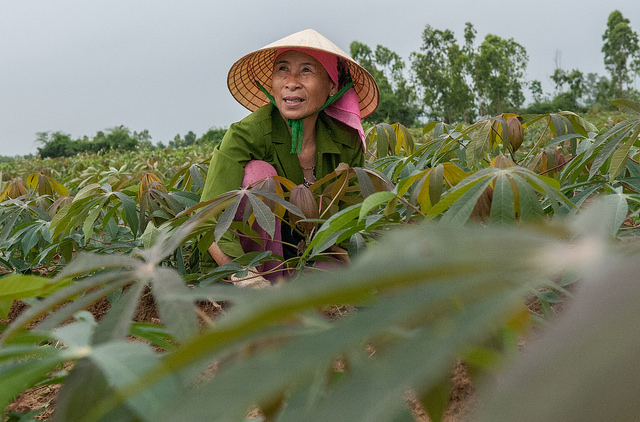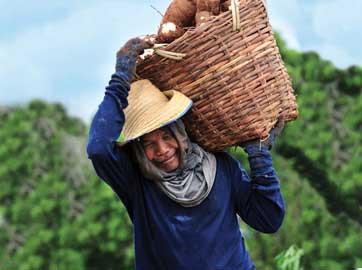Cassava is the second most important food crop in the least-developed countries, and the fourth most important in developing countries, with total production (218 MT), of which over half is in Africa and another third in Asia.

Photo: CIAT
It is mostly grown by smallholders. Commonly considered to provide only carbohydrates, cassava also contains significant minerals including micronutrients. High pro-vitamin A (PVA) cultivars exist and leaves are consumed as a nutritious vegetable in some countries.
There is a significant global market for dehydrated cassava that is boosting production with new market opportunities. Originating in the Americas and adapted to the tropics and subtropics, wild Manihot exhibit significant variability for adaptation, nutritive content, and toxins (cyanogenic glucosides), and resistance to pests, diseases, and postharvest deterioration.
This perennial species is handled as an annual crop that is tolerant to many abiotic and biotic stresses, including low-fertility soils, and can be left unharvested until needed. The short shelf-life requires efficient marketing/fresh consumption or processing. Cassava cultivars are heterozygous hybrids propagated by woody cuttings called stakes. Key breeding objectives are yield, high dry matter, resistance to viruses such as cassava mosaic disease and cassava brown streak disease, compatibility with integrated pest management (IPM), tolerance to drought and low fertility, and low toxins, high-carotene, and fodder.
